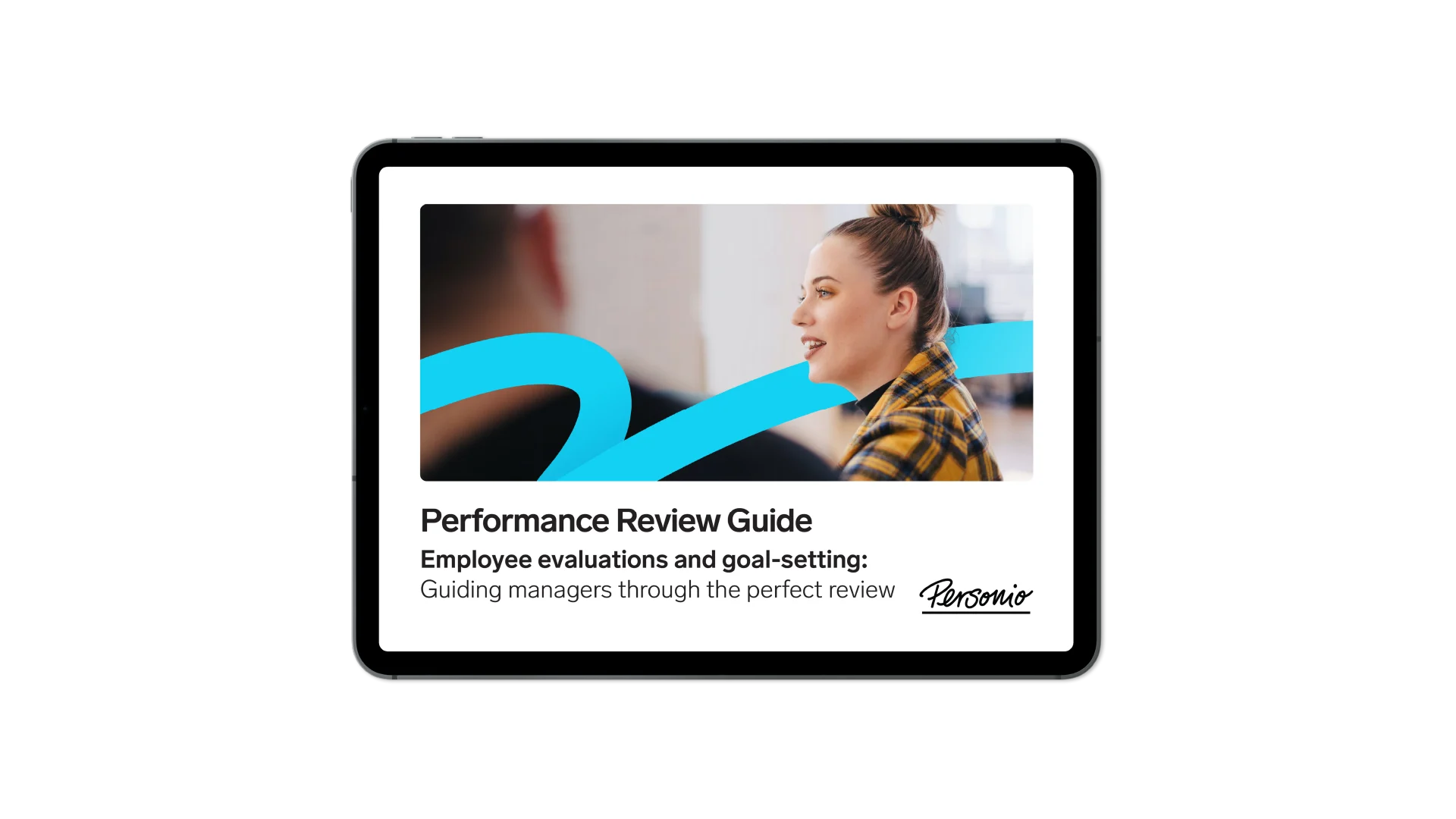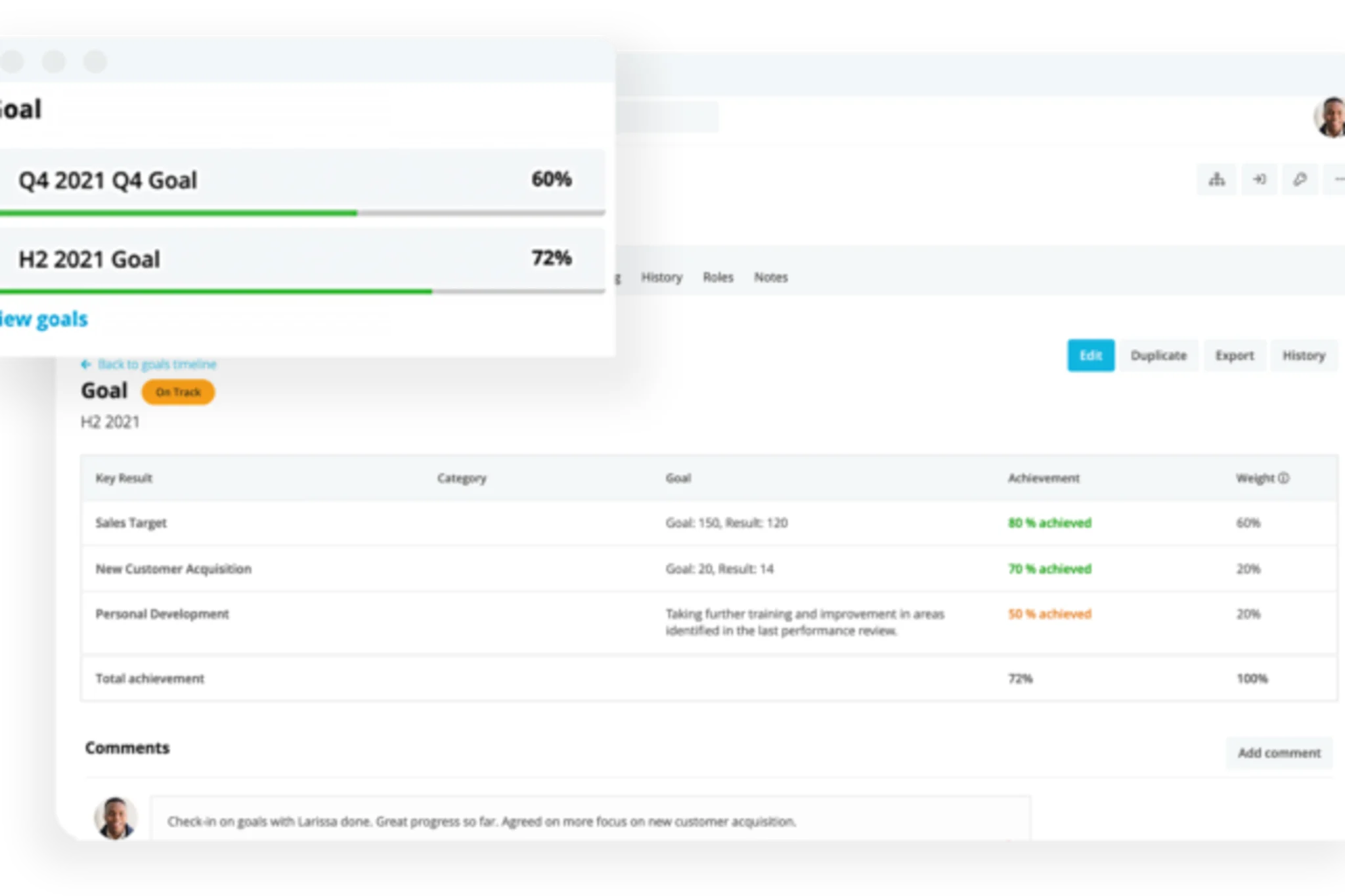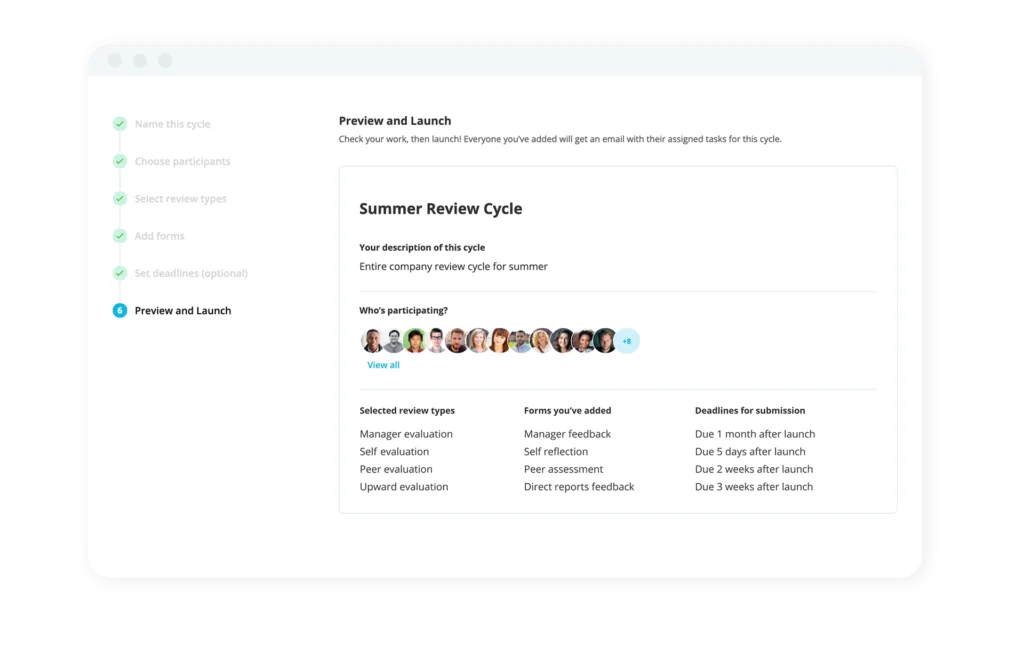Should Your HR Team Invest In Upskilling Training?

Investing in upskilling your workforce may be the difference between winning and losing the greater war for talent. But, many UK organisations are experiencing a training/skill disconnect within their teams.
While 97% of UK professionals have a desire to upskill, only 4% feel their employers view upskilling as essential. How do you bridge that gap? By making the investment into upskilling training. Here's everything you need to know.
Focus on the skills of your entire workforce. Download our guide to help.What is Upskilling?
Upskilling is giving your employees access to improving their skills. It can be seen as a form of training to help an employee enhance or introduce new skills into their work, through courses, mentorship or hands-on learning.
Depending on the employee, the goal of upskilling could be to:
Improve job performance
Prepare for a promotion
Update their knowledge of a topic, system or process
What is Upskilling Training?
Upskilling training is designed to build on what an employee already knows or does well. An example of this may be when an employee is promoted. They were promoted to a new role based on the skills they had, but they may need to augment those skills to take on new challenges.
And so, upskilling training becomes incredibly relevant.
Upskilling can be used to improve both soft and hard skills. To take our previous example, if an employee is upskilling to transition into a management role, their training could focus on soft skills like communication, problem-solving and decision making.
Hard upskilling would focus more on technical skills and capabilities, like learning how to use a new application or software, increasing your typing speed or improving your writing.
Upskilling vs Reskilling: What’s The Difference?
Upskilling is used to help employees improve or build upon their existing skills and knowledge. But reskilling is better-suited for employees who are experiencing a more significant change in their role and need to learn brand new skills.
Upskilling and reskilling are similar, but not interchangeable.
Think of it this way: Upskilling is linear and reskilling is lateral.
Let’s take a look at an upskilling example:
Jennifer started her career at a marketing agency as a Graphic Designer, where her work has primarily focused on print marketing. She hasn’t worked in UX design before, but after supporting the UX Designers by completing small tasks, she’s gained an interest in the work and wants to learn more.
So, she takes a self-paced course online and gets partnered with a Senior UX Designer at her organisation for mentorship. Through this upskilling, she’s built upon her graphic design skills and expanded her expertise to include UX design, making her even more valuable to the organisation.
And here’s a reskilling example:
Jake works in retail, where he’s worked his way up to Department Manager since starting part-time in high school. Now in his mid-twenties, he’s looking to make a career switch.
He’s an amateur coder and wants to make it his full-time gig, and through his company’s training program, he’s able to obtain a Bachelor’s Degree in Computer Science and pursue a role as a Software Engineer.
While his workplace gave him the resources he needed to reskill, his new role is in no way related to his previous position.
The Upside To Upskilling: How Do Organisations Benefit?
Upskilling is all about creating a more sustainable workplace. By investing in the employees you have now, you’re paving the way for a higher-performing and more valuable workforce in the future.
Here’s how your organisation can benefit from upskilling training:
1. You Become A Talent Magnet
Today’s workers want to continually learn and improve—and they expect their organisations to provide high-quality development opportunities for them to do so.
This desire for learning spans generations, too. Millennials are the most willing to upskill, with 98% of them eager to learn new skills. Gen X and Baby Boomers want to upskill their digital skills, while Gen Z and Millennials are looking to improve their interpersonal skills.
By investing in and promoting your upskilling training, you can attract talented workers who are eager to learn.
2. You Create A Culture of Learning
When a workplace has a true culture of learning, the people there don’t have to be forced to learn—they want to learn. You can create this culture by providing upskilling training, which helps employees develop a growth mindset and habit of continuous learning.
To further develop a culture of learning in your workplace…
Make upskilling a business priority, not just an HR initiative.
Increase your team’s accessibility and awareness of learning and development programs by promoting them in your
internal communications, marketing and job adverts.
Reward and recognise those who complete upskilling programs.
Provide clear career progression frameworks for employees so they see where learning can take them.
3. It Gets Your Team Future-Ready
Upskilling helps your team get comfortable with the future of work, whether they’ll be working with new technologies or adapting to new ways of thinking.
On the Future Skills Centre podcast, Sashya D’Souza shared the four types of skills organisations should cultivate to make their workplace future-ready:
Human experience skills such as emotional intelligence, which workers can use to better understand their customers.
Reimagination skills that allow for creative thinking and innovative solutions.
Pivoting skills that include learning agility and adaptability.
Future currency skills such as digital and data acumen.
4. You’ll Retain Skilled Employees For Longer
Skilled, high-morale employees are hard to replace—which means you want to keep them around. But if those employees aren’t given the mental stimulation or learning opportunities they desire, their morale can wane, which leads to disengagement and, oftentimes, their two weeks notice landing in your inbox.
5. You’ll Improve Customer Satisfaction
Upskilling leads to more knowledgeable and confident employees, which leads to better customer experiences. Whether your training is focused on a new product or service or on improving communication and sales, upskilling can help your client-facing employees better serve your customers.
6. It Increases Skill Relevance and Utility
Upskilling is all about making your team resilient to the future of work. Whether your training is used to mitigate the impacts of AI and automation, to improve workflows or to develop your next generation of leaders, it will help your people stay relevant and as useful as possible in an ever-changing environment.
7. You’ll Nurture In-Demand Talent
When you have upskilled employees, you don’t have to look outside of your workplace for your next hire, because you’ve already nurtured a growing pool of in-demand talent. You don’t have to rely on the job market to fill in skills gaps; instead, you have the power to build your ideal workforce from the inside.
Focus on optimising your "legacy of talent” with succession planning.
8. You’ll Have A More Agile And Adaptable Team
The pace of change has accelerated quickly over the years, and there’s no sign it slowing.
If your team shifts from in-person to remote working (or vice-versa), brings in new software or technology or your product or service evolves, how will your employees respond to that change?
Through upskilling, your team can develop the technical skills they need to stay ahead. But just as importantly, it instils in them an open, ready-to-learn mindset, so they can take on whatever new challenge comes their way.
What Does An Upskilling Training Strategy Look Like?
Upskilling training comprises all of the courses, programs, and resources required to help your employees enhance their skills.
Yes, upskilling training is used to help employees improve themselves. But at its core, it’s a tool to help your organisation achieve its business goals.
Your upskilling training strategy should focus on solving the issues you’re facing now and prepare you for what you’ll face in the future. To build your training, you need a solid understanding of what’s required for each role and clearly-defined skills assessments to measure trainee success.
8 Examples Of Upskilling Training
Many employees naturally upskill throughout their career, learning as new programs and systems are introduced to them. But upskilling needs to be intentional to truly be effective.
Here are some examples of upskilling training programs you can use to create a more a more productive, forward-thinking and sustainable workplace:
1. Agile Online Training
From webinars and quizzes to podcasts and interactive games, there are more ways than ever to learn online.
Whichever method you choose for your upskilling training, focus on creating an immersive and experiential learning ecosystem that’s easily accessible to all workers, so they can learn where, when, and how they want.
Real-World Inspiration: PricewaterhouseCoopers
In 2019, PricewaterhouseCoopers launched a job training initiative called “New World, New Skills” for all of its employees.
This included developing a free Digital Fitness App, available in Apple’s App Store, where employees can explore digital trends, curate educational information, identify their skills gaps and then follow a personalised learning path to improve their competencies.
2. In-Person Training
In-person training includes seminars, workshops or lectures from in-house or external experts, as well as on-the-job training, which is the most popular method of learning at work.
For upskilling purposes, in-person training can be especially helpful when educating your employees on industry trends or gaining expert insights from those outside of their regular sphere of influence.
Of course, lectures and seminars can also be recorded and converted into videos or audio files and uploaded to your online training system so employees can watch them when and where they desire.
3. Blended Learning
When it comes to employee training, you need to provide your team with the freedom to choose how and where they learn. Some employees may thrive in a classroom setting, learning from an instructor, while others learn best in an online environment, reading text.
That’s why taking a blended learning approach to upskilling training works so well. You can provide employees with several learning options, so they can take a more personalised journey and feel more ownership over their progress.
4. Formal Education And External Courses
Upskilling your employees may require formal education or certifications from outside of your company. While it can be more of an investment, most employers see the value as they want their team members to receive high-quality and accredited training.
Take a cue from Starbucks. The global coffee chain has a College Achievement Plan that includes tuition coverage for its employees for specific programs, but they also have proprietary e-learning courses for their employees to upskill and move up within the company.
5. Mentorship And Coaching
One of the most cost-effective ways to help employees upskill is through mentorships and coaching.
Since you already have the resources, the next step is to make your mentor-mentee match. (Of course, you also need to allocate time and energy to ensure the mentor is well supported, and to monitor the employee’s progress.)
Mentorship and coaching are especially effective for employees looking to improve their leadership skills or improve their soft skills, as they gain one-on-one advice and real-world guidance from a senior staff member.
6. Community Upskilling
Community upskilling is a peer-led approach to training.
Google’s Googler-to-Googler program is a great example of community upskilling done right: It’s a volunteer-based training program where over 6,000 employees learn from each other, create and lead training courses, run mentorships, and more.
Your community upskilling could also include cross-training or reverse mentoring, where employees spend time learning skills in a role similar to their own to help them gain hands-on knowledge.
7. Learning And Development Spending Accounts
Instead of assigning specific courses to employees, you can instead provide them with a corporate spending account that’s only to be used for learning and development.
By providing this support, you remove financial barriers and make career progression more accessible. You could provide partial or full tuition reimbursement for selected courses and classes taken, or leave it open for the employee to choose what they invest in.
8. Hands-On Opportunities
At the end of an employee’s upskilling training, give them the opportunity to demonstrate their newfound skills. Maybe the employee takes the reins on a new project, presents a marketing plan to key stakeholders or leads a strategy call.
This gives them the opportunity to apply their training and get actionable feedback—and for the company to receive almost immediate ROI from the training investment.
Is Now The Right Time For Upskilling Training?
With 35% of current UK jobs at risk of automation over the next two decades, upskilling is a great way to keep your workforce ahead of the curve, starting now.
But that’s not the only reason to launch upskilling training programs. Simply put, your employees want and need them, with 34.6% of UK workers saying their company doesn’t provide them with enough resources to develop their skills.
Remember: All of the upskilling training you deliver should be in service to your organisation’s short- or long-term goals.
Yes, you’ll get more knowledgeable and skilled employees either way, but if your learning and development strategy isn’t aligned with your business goals, you’re only reaping half of the benefits of your investment.


